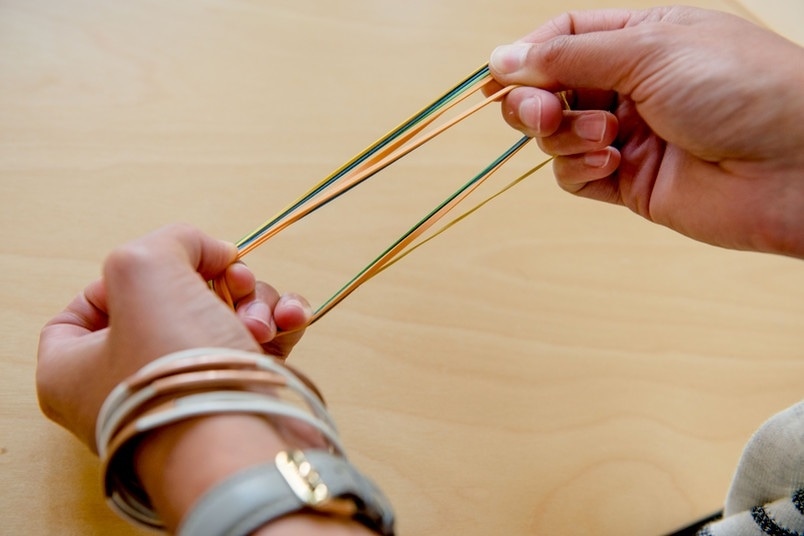Oct 26 2016
 If one bends rubber bands again and again, the sulphur bridges in the material break. The rubber becomes brittle. © RUB, Marquard
If one bends rubber bands again and again, the sulphur bridges in the material break. The rubber becomes brittle. © RUB, Marquard
Bonds between two sulfur atoms that link long molecules together are indispensable in rubber and proteins. Unexpected complex processes are generated when pulling from outside on the disulphide bonds.
Based on a chemical perspective, the splitting of disulphide bonds under tensile stress is considered to be a more complicated process than earlier understood. A team led by Prof Dr Dominik Marx from Ruhr-Universität Bochum examined what happens in detail during this process, with the help of extensive computer simulations on the Jülich supercomputer “Juqueen”. A report on these results has been published in the journal “Nature Chemistry”.
The reaction mechanism that is responsible for splitting the bond changes based on the strength of the pull exerted on the bond existing between the two sulfur atoms.
That was previously unknown, and it especially makes a correct interpretation of experimental data much more complicated than thought.
Dr Dominik Marx, Professor, Ruhr-Universität Bochum
Disulphide Bonds Under Stress
For instance, disulphide bonds occur in proteins. These bonds keep them in specific structural arrangements and are used as a switch for biological processes. If they are placed in an alkaline aqueous solution, which is then heated, the following chemical reaction commences: A hydroxide ion (OH-) attacks the disulphide bond, develops a new bond with one of the sulfur atoms, and then splits the bond. Scientists refer to this mechanism as alkaline hydrolysis in water.
The researchers in Bochum analyzed what takes place when the sulfur bond also experiences tensile stress. The team performed a computer simulation of a corresponding molecule in aqueous solution and practically pulled on two ends of the bond.
Such mechanochemical processes actually occur for small forces in cells, or they are used in order to recycle old rubber.
Dr Dominik Marx, Professor, Ruhr-Universität Bochum
Role of Water Decisive
In simulating these processes, it was important to correctly take into account the role of the surrounding water. A coating of water molecules surrounds the hydroxide ion that attacks the disulphide bond. This coating undergoes modifications in a complicated manner during the attack.
Generally, theoreticians use methods that simplify the effects of the surrounding water to reduce the required computational effort. The processes can be realistically stimulated when the water is computed quantum mechanically, the same as all of the other molecules. It is only then that the simulation provides the correct energy flow of the reaction in the aqueous solution.
Immense Computational Effort
The extensive computer simulations known as ab-initio molecular dynamic simulations are considered to be the key for success. “They do require an immense computational effort,” explains Marx.
It was managed by the IBM Blue Gene/Q computer “Juqueen”, one of Europe’s fastest computers, at the Jülich Supercomputing Centre at the Jülich Research Centre. A key project of the Gauss Centre for Supercomputing helped achieving the calculations.
Brutal Physics Victorious over Subtle Chemistry
Although complex chemical processes occur as the tensile stress increases, something quite simple happens at maximum force.
Dr Dominik Marx, Professor, Ruhr-Universität Bochum
A firm pull, for instance a force of two nanonewtons, applied on the bond, prevents the occurrence of the alkaline hydrolysis of the sulfur-sulfur bond. Instead, the bond existing between a neighboring carbon atom and one of the sulfur atoms simply breaks. Or, as Marx summarizes in somewhat of an overstatement: “When raw force rules, brutal physics defeats subtle chemistry.”